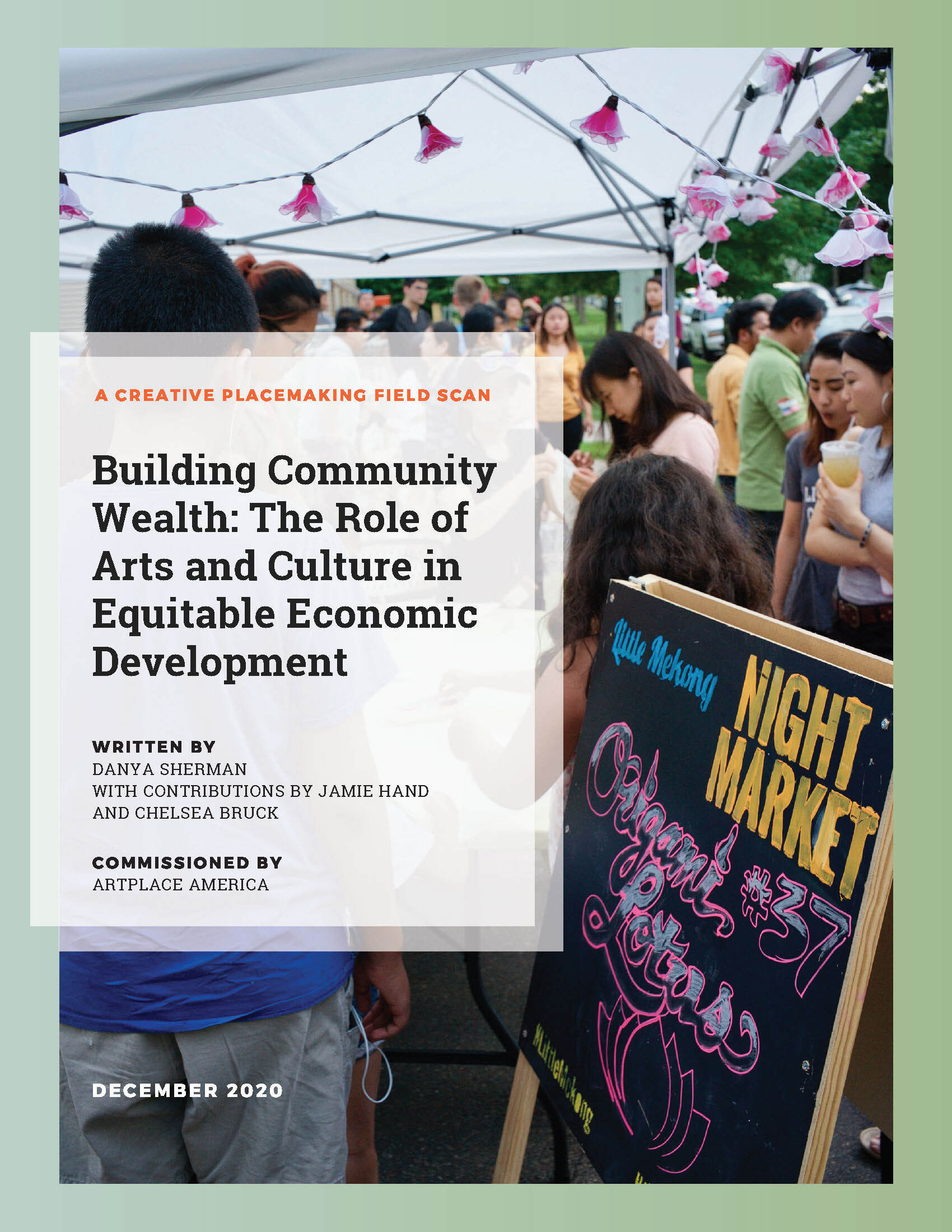Economic Development
Introduction
ArtPlace’s research and field building efforts in the economic development sector uncovered a powerful, values-explicit framework for shifting to a more democratic, arts-integrated, and just economy: community wealth building. Community wealth building strategies build local economies from the ground-up; they are governed by local grassroots efforts, prioritize justice and democratic ownership, and naturally integrate creative and culturally-explicit ways of working. When advocating for economic strategies that integrate arts and culture, our research showcased the need to be proactive and explicit about who the strategies will benefit and to what end. One-size-fits-all approaches to community economic development that are not explicitly supportive of working people, communities of color, Native nations, and other oppressed groups risk harming them. Thus, we elected to align our efforts with the ‘community wealth building’ frame rather than community economic development, more generally.
Our initial research into this sector began in 2019, long before the COVID-19 pandemic hit. Our plans to convene a working group in Spring 2020 were impacted, however, so we pivoted instead to convene a group of external reviewers virtually, and to cultivate a partnership with community wealth building intermediary Common Future to carry this work beyond ArtPlace’s tenure.
Common Future will develop and launch a community-advised fund and field-building initiative in 2021. The fund will direct resources to transformative organizations within the Common Future network who are working at the intersection of arts, culture, and equitable economic development. The initiative will use these demonstration funds to help inform and support the growth of creative community wealth building practices.
It’s worth noting that ArtPlace intentionally conducted research and field building efforts in the economic development sector separately from (though simultaneously with) our work in the workforce development sector. While there is significant overlap between these two spheres of practice, the stakeholders and systems governing each industry are distinct.
Field Scan
Following the external review process, ArtPlace authored a paper in collaboration with Common Future that summarizes key trends in the community economic development sector and outlines several key tenets of community wealth building: democratic decision-making, collective ownership, reparations and justice, prioritizing workers’ wellbeing, non-extractive investing, and sustaining valuable resources. The paper then describes six ways that arts and culture advance community wealth building:
- Facilitating collaboration for complex group decision-making
- Accessing imagination to bring new economic structures into being
- Building power to strengthen movements that shift local economic conditions
- Healing individuals and communities from extractive labor and economic practices
- Making the case for holistic, people-centered financing
- Creating new and sustaining existing forms of resource generation
Case studies of several organizations leading creative community wealth building are included in the field scan (and below). Download the full report, Building Community Wealth: The Role of Arts and Culture in Equitable Economic Development, to learn more.
Working Group
In lieu of an in-person working group, ArtPlace conducted an external review process that invited responses from practitioners across the arts, culture and community economic development fields, culminating in a virtual dialogue and exchange on November 18, 2020. We are grateful to the following individuals for their insights and contributions.
Oscar Perry Abello, Next City
Olayinka Credle, Common Future
Lomax Campbell, MBA, DMgt, Mayor's Office of Community Wealth Building (City of Rochester, NY) and Niche Market Insights Foundation
Laura Christopher, MassDevelopment
Ben Fink, Founding Organizer, Performing Our Future
Alexis Frasz, Helicon Collaborative
Stephanie Gutierrez, Hope Nation Consulting
Margaret Hunt, Colorado Creative Industries, Governor's Office of Economic Development & International Trade
Emily Kawano, US Solidarity Economy Network and Wellspring Cooperatives
Amy Kincaid, Common Future
Tim Lampkin, Higher Purpose Co.
Giles Li, The Barr Foundation
Joyce Pisnanont, National Coalition for Asian Pacific American Community Development (National CAPACD)
Pamela Standing, Minnesota Indigenous Business Alliance
Jess Solomon, Art in Praxis
Thomas Watson, Rural Support Partners
Case Studies
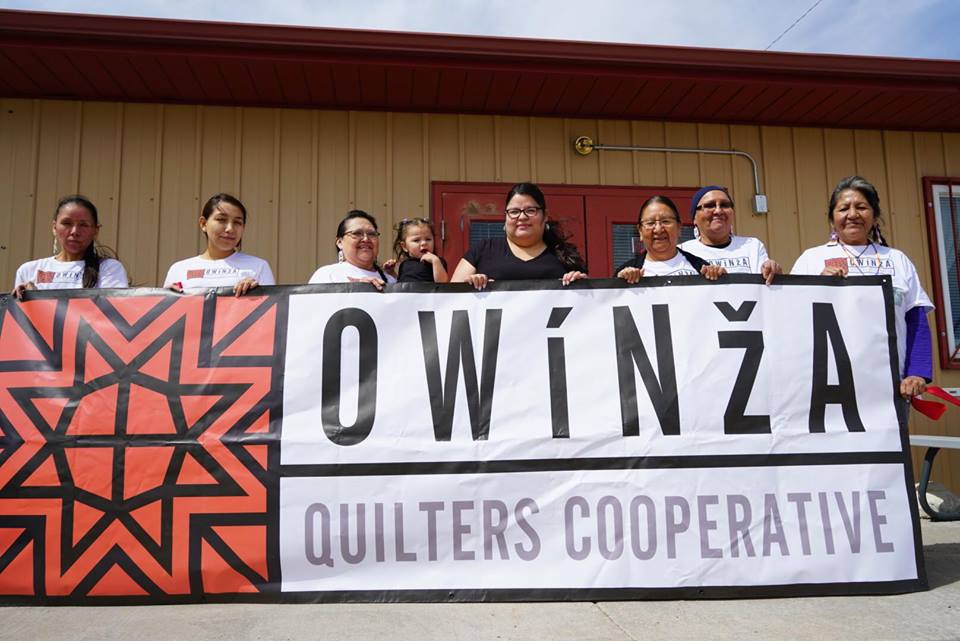
Photo courtesy Thunder Valley CDC and the Democracy Collaborative.
Thunder Valley Community Development Corporation (TVCDC) is a Lakota-led organization who envisions a liberated Lakota nation through their language, culture, and spirituality. TVCDC works to empower Lakota youth and families on the Pine Ridge Reservation to improve the health, culture, and environment of their communities through the healing and strengthening of their cultural identity. Their work takes aim at colonization; for liberation to be realized, TVCDC focuses on Lakol iyukcan (Lakota thought) – individual and collective shifts in mindsets and worldview to once again think and act like a Lakota. The type of change they envision for their nation begins with the individual; each individual must be sovereign, self-determined, and liberated. Sovereignty does not lie with an entity or a government; it takes shape in each person and then extends to the family unit, extended family, and eventually the entire nation. TVCDC's Lifeways and Wellness Equity Unification is their intentional effort to pragmatically and systemically provide healing pathways to their people, and particularly, to their most vulnerable populations – those on the periphery. These pathways guide community members in making that mindset shift, this mindset shift then creates a culture shift in their families and communities, and that creates a movement of liberation.
TVCDC provides a whole community approach through eight initiatives: Regenerative Community Development, Workforce Development, Youth Leadership Development, Social Enterprise, Housing and Homeownership, Regional Equity, Lakota Language Revitalization & Education, and Food Sovereignty. As part of their community-governed master plan, TVCDC completed and sold seven single-family homes, opened a Community Center and Bunkhouse, and completed and rented a 12-unit apartment building right in the heart of the Pine Ridge Reservation. Among other community wealth building initiatives, their social enterprise incubated the Owíŋža Quilters Cooperative, and a worker-owned cooperative called Thikáǧa Construction Company, which is now constructing the remaining homes.
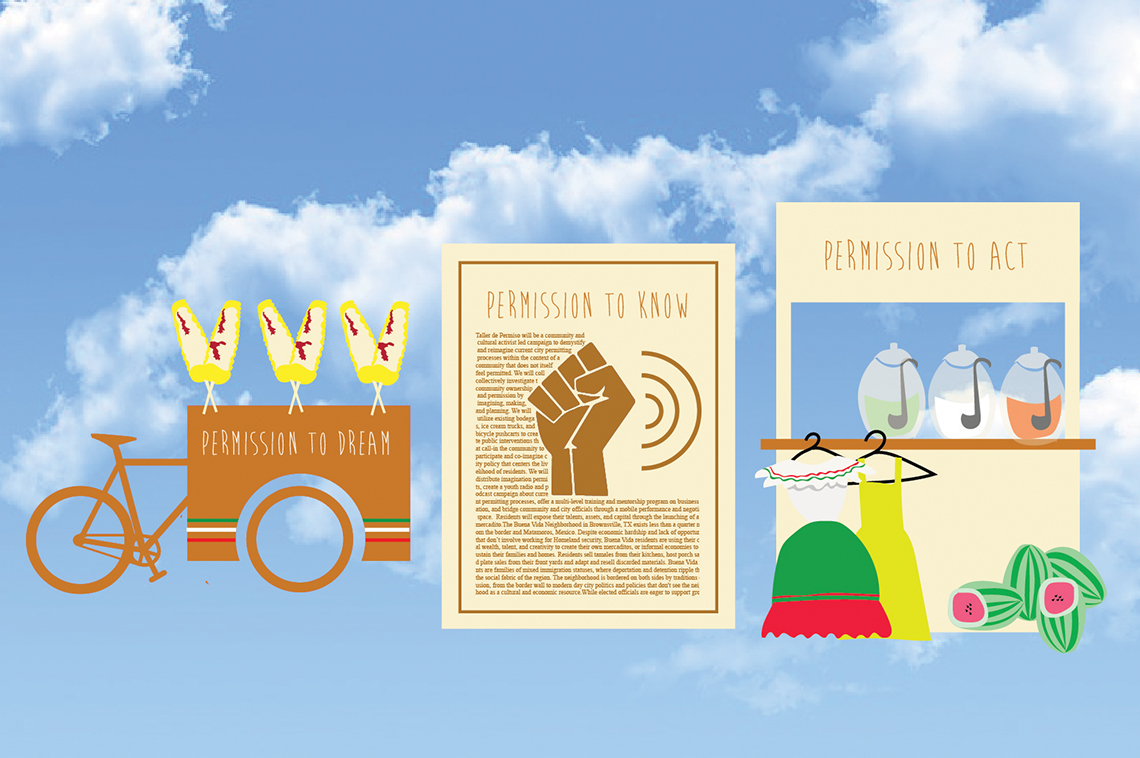
Video still from Taller de Permiso project overview. Graphic design by Nansi Guevara, editing by ChristinaMaria Patiño Xochitizihuatl Houle, Courtesy Las Imaginistas.
Las Imaginistas are a socially engaged art collective from Brownsville, Texas. Founded in 2016 by artist-activists Celeste De Luna, Nansi Guevara and Christina Patiño Houle, the collective has since expanded to include more than 15 artists and makers who all work in close collaboration with low-income and immigrant communities along the Rio Grande Delta to advance justice and equity. Through one of their signature ongoing projects, Taller de Permiso (Permission Workshop), Las Imaginistas collaborated with community members to take an active role in envisioning and advocating for more democratic, sustainable economic opportunities in Brownsville. While the project's workshops empowered local entrepreneurs with tools to navigate the existing complex permitting process for street vending, the concurrent community-led media and art campaign is focused on questioning the status quo in economic development and celebrating residents’ ability to imagine a future city that is shaped by their dreams for sustainable futures. Through performance and art interventions – such as using eloteros (grilled-corn food carts) to conduct community listening sessions, or animating interviews with city officials about public discussions about policy change – Las Imaginistas support community members in using activist strategies that celebrate regional cultural wealth and promote egalitarian government processes.
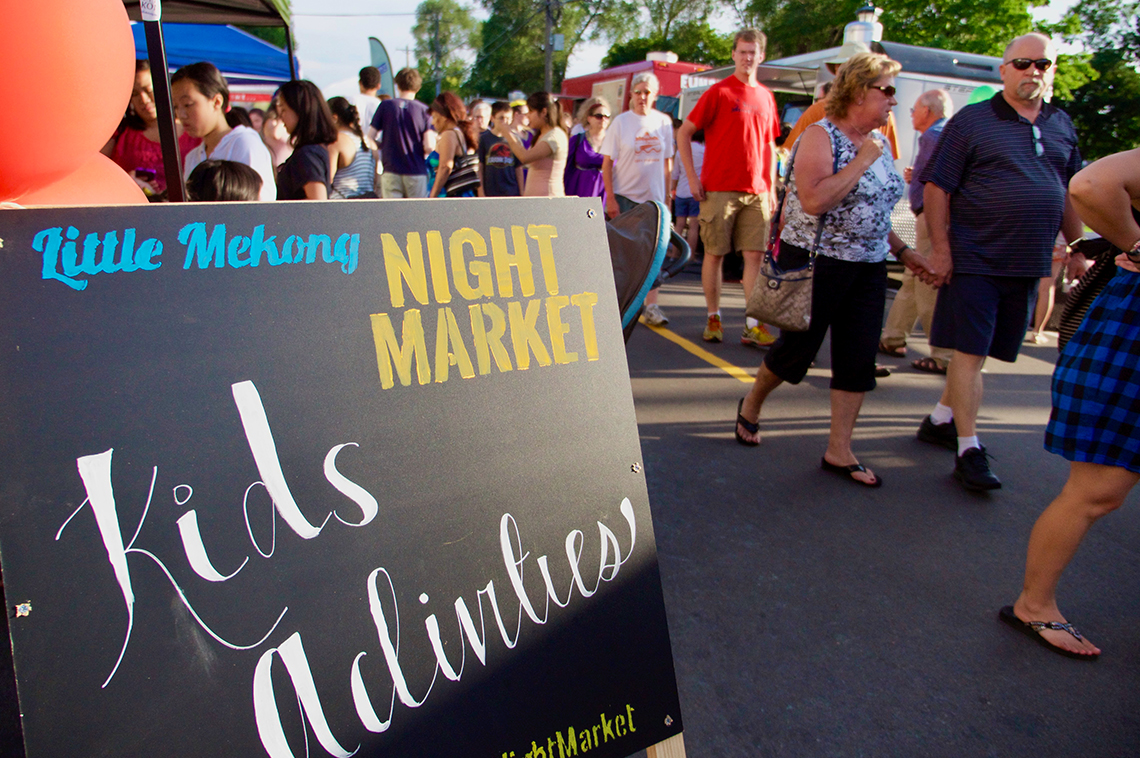
Photo courtesy Asian Economic Development Association.
Little Mekong is a business and cultural district in St. Paul, Minnesota that spotlights and works to preserve the surrounding communities’ Southeast Asian cultures. In early 2012, the Asian Economic Development Association (AEDA) formed Little Mekong to support the historically disinvested neighborhood and many Asian-owned businesses facing the threat of displacement from the nearby construction of a new light rail transit system. From the very beginning, AEDA centered local artists and makers in their economic development strategy for Little Mekong, recognizing that artist and community-led creative placemaking would attract a wider swath of customers and investments to the area while empowering residents to continue to fight gentrification. One of their first initiatives was to pair local artists with under-resourced businesses to help keep the businesses afloat and increase community bonding. AEDA also provided artists with community engagement training and included them in physical revitalization projects across the corridor. Now, the district consists of over 100 small local businesses, the majority of which are immigrant- or minority-owned, and includes a weekly night market that doubles as a creative platform for local artists and musicians. Little Mekong has become one of the city’s top destinations, attracting hundreds of thousands of visitors and millions of dollars in business income per year. Residents consistently engage with the City’s planning efforts, continuing to advocate for their vision of a vibrant, livable community, and AEDA engages in ongoing policy, advocacy, and coalition-building work to build racial equity.
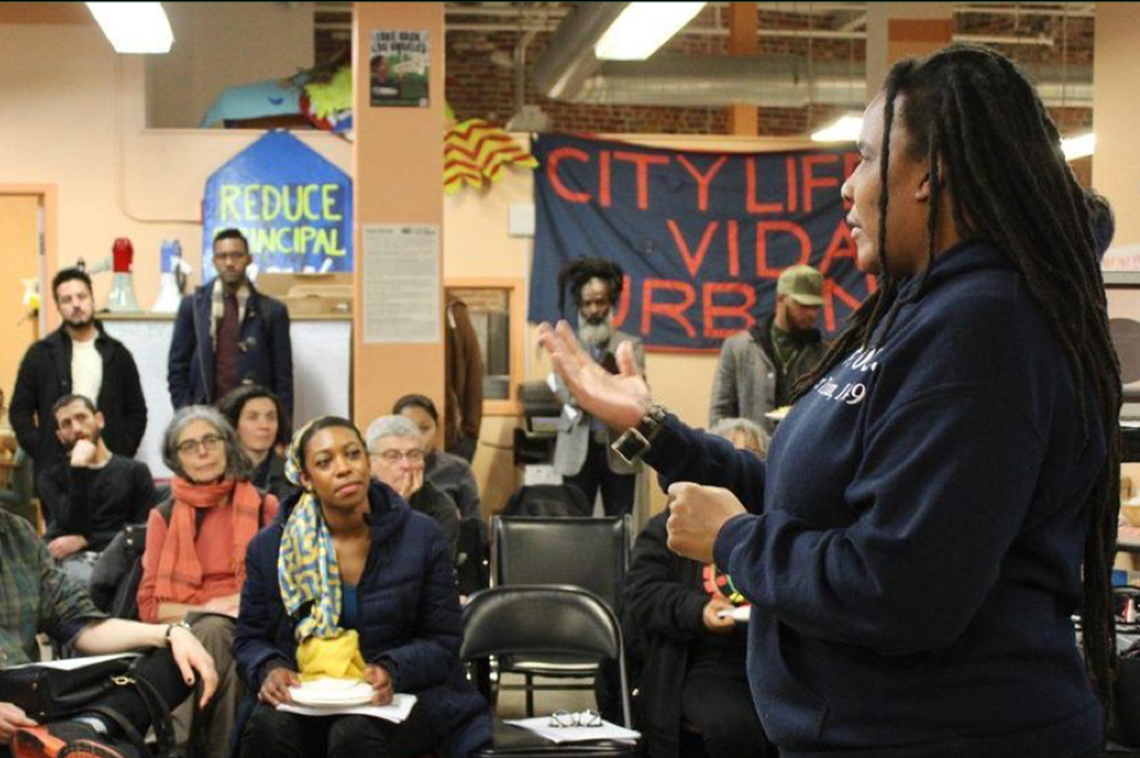
Photo courtesy Sarah Jacqz.
The Boston Ujima Project is a democratically governed multi-stakeholder organization that is building a community-controlled economy with working class communities of color in Boston. Taking its name from the Swahili word for “collective work and responsibility,” the Ujima Project organizes neighbors, workers, business owners, artists, activists, and investors to challenge poverty and build collective power by finding new ways to manage and grow local wealth in a just and sustainable manner. Founded in 2017, the Ujima Project began with an ambition to create a public bank. Compelled by the promise of systemic rather than singular address, Ujima adopted an ecosystem approach comprising a democratic investment fund designed to support local small businesses and community real estate projects, a community timebank that facilitates the exchange of services on a barter system, a Good Business Certification process and related local business association, and in the wake of the Coronavirus pandemic, the Boston Resident and Worker Care Fund. The Ujima Project also provides educational resources about how to build a more just society and supports creative storytelling and advocacy efforts that help to expand its reach. An organizational pillar, Ujima's Arts and Cultural Organizing program recognizes cultural workers as economy-builders and provides artists with a space to organize.
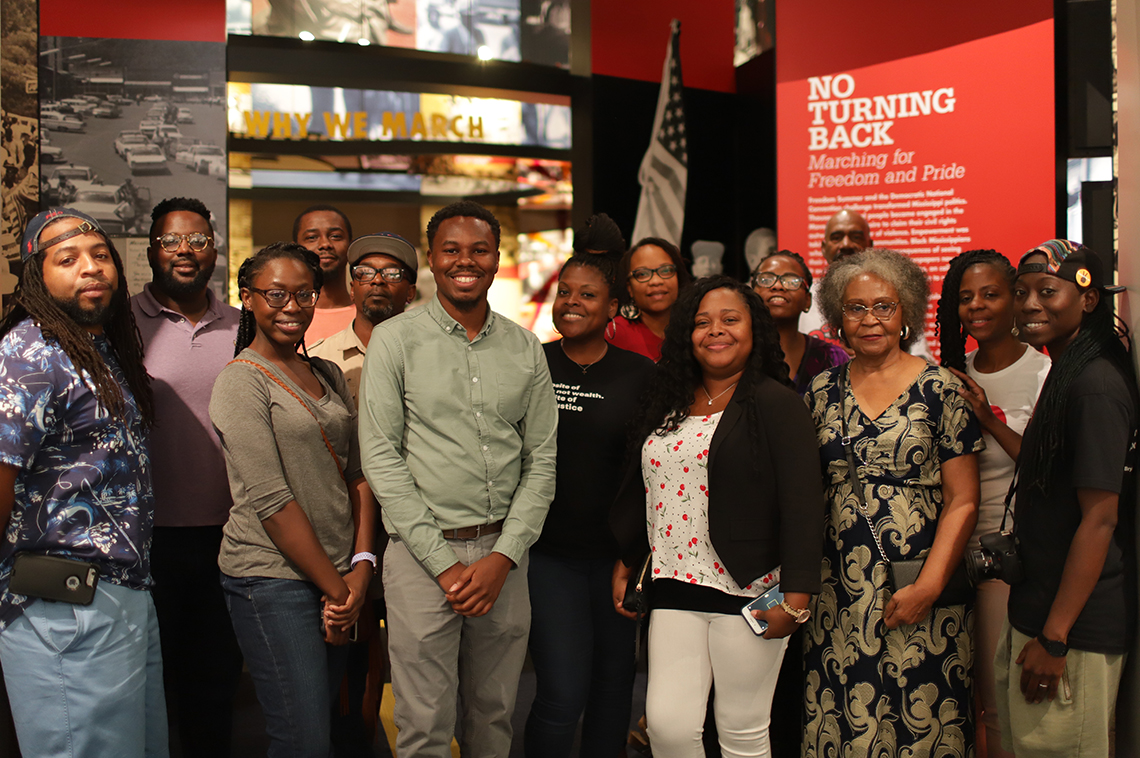
Amanda Paige, Courtesy Higher Purpose Co.
Higher Purpose Co. is an economic justice 501c3 nonprofit organization focused on community wealth building with Black residents across the Mississippi. Through an integrated model that combines business ownership, narrative change through storytelling, and advocacy campaigns, Higher Purpose Co. supports local Black entrepreneurs, farmers, and artists in the fight to tackle intergenerational poverty and institutional racism in Mississippi. As Higher Purpose Co.’s CEO and Co-Founder Tim Lampkin once told ArtPlace, the organization focuses on reclaiming and recirculating community wealth “through the ownership of financial, political, and cultural power,” which includes helping artists-entrepreneurs make a living by teaching them business skills. Towards this end, Higher Purpose Co. has operated a statewide funding network since 2019 with community development financial institutions (CDFI's), Kiva, and foundations, which has provided $750,000 to Black entrepreneurs, artists, and farmers in Mississippi using a capital matchmaking non-extractive model, application packaging, and business advising. Furthermore, the organization offers a a six-month statewide business fellowship, yearly membership, a film initiative, and an institute focused entrepreneurship education, research, and advocacy.
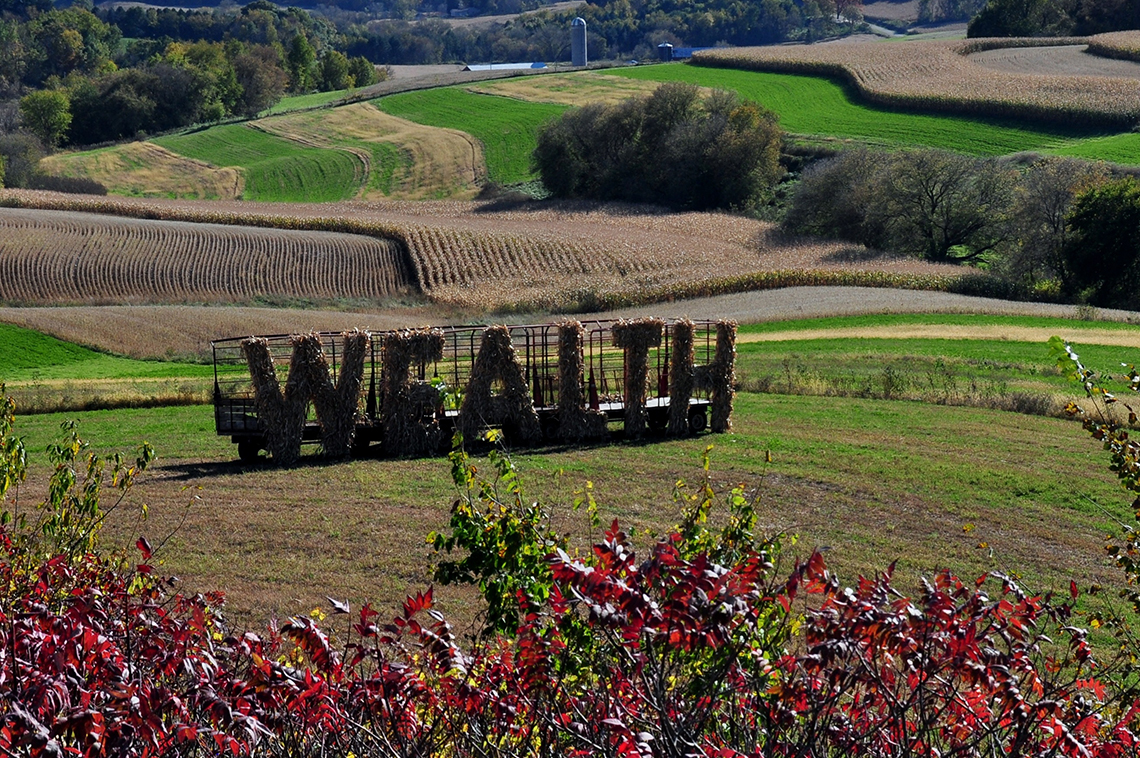
Photo by Paul Daudynski, Courtesy Wormfarm Institute.
The Wormfarm Institute is a non-profit organization dedicated to “building a sustainable future for agriculture and the arts by fostering vital links between people and the land.” Based in Wisconsin, the organization has been working for 20 years to create new economic opportunities in the region and support a flourishing cultural ecology by bringing rural and urban communities together around farming, land conservation, and the arts. Wormfarm's initiatives include an artist residency program, the management of “roadside culture stands” across the state, an annual fermentation festival, and more. As part of the annual Fermentation Fest, the organization launched the biennial Farm/Art DTour in 2011 as a way to make the connections between the land and art more legible and to stimulate the local economy. Farm/Art DTour is a free, self-guided drive through Wisconsin’s working farmland that features large-scale public artworks, local food markets, roadside poetry, and educational field notes. Since 2011, the event’s attendance has grown from 3,000 to over 22,000 people, helping to unlock investments in local cultural assets and resources that were previously undervalued.






